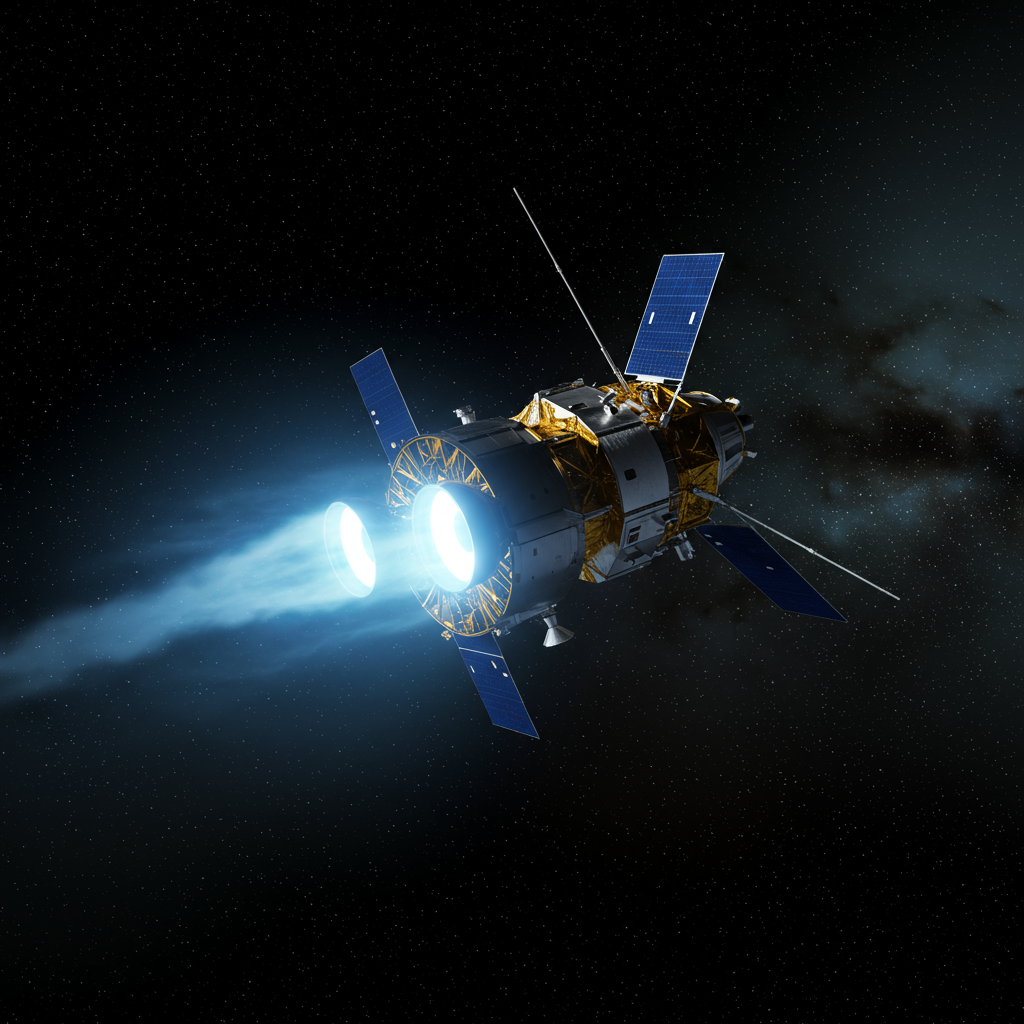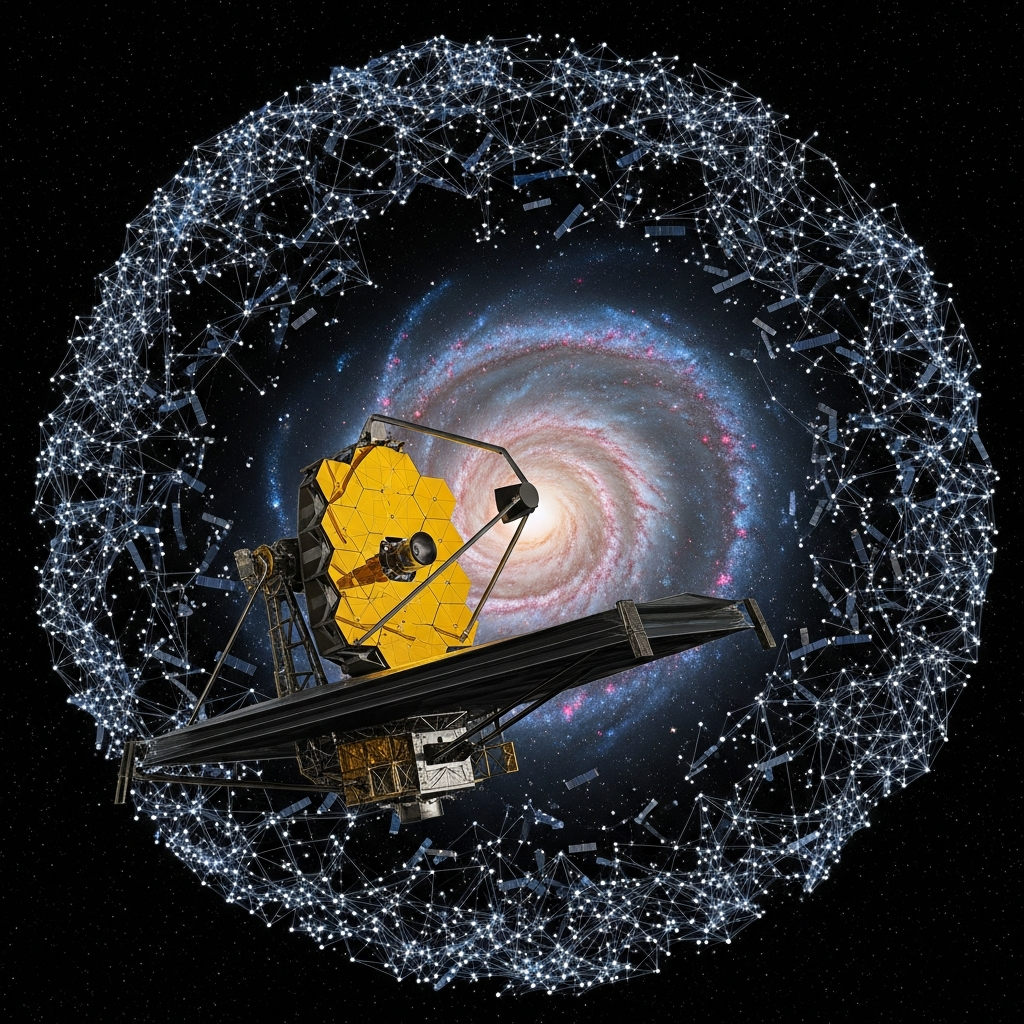Great news from deep space: NASA’s Psyche spacecraft has successfully restored full propulsion capability after a temporary interruption. This critical recovery ensures the unique mission remains firmly on course for its target – a rare, metal-rich asteroid located in the main asteroid belt.
The spacecraft, powered by an advanced electric propulsion system, resumed full thrusting on June 16, 2025, following several weeks of analysis and engineering work. The return to steady propulsion is vital for maintaining the precise trajectory needed to reach its distant destination.
Temporary Halt Due to Pressure Drop
The unexpected pause in propulsion began in early April 2025. Engineers detected an abnormal drop in pressure within the system’s primary xenon gas line. Specifically, the pressure fell from 36 psi to 26 psi, which triggered an automatic shutdown of the spacecraft’s thrusters.
While the spacecraft remained stable, the pressure anomaly prompted mission controllers to suspend full propulsion activities to investigate the issue. Detailed analysis pointed to a valve problem within the primary xenon line, a key component providing fuel to the electric thrusters.
Ingenious Solution: Switching to Backup Systems
Unable to safely resolve the valve issue in the primary system remotely, the mission team enacted a strategic plan. Thanks to robust spacecraft design, Psyche is equipped with redundant systems, including an identical backup xenon line.
The team successfully transitioned operations to this backup line. This proved to be the solution, allowing thruster activity to safely and reliably resume on June 16. Handling such technical issues is considered a normal, albeit challenging, part of complex deep space exploration, and missions are designed with this foresight. As experts note, redundancy is specifically included to manage potential failures and keep critical objectives achievable.
Keeping the Mission on Schedule
With propulsion restored via the backup system, Psyche’s solar electric thrusters are now performing as expected. The team plans to utilize continuous thrusting for approximately three months between June and November 2025.
This sustained effort is essential for maintaining the spacecraft’s velocity and trajectory, ensuring it stays on schedule for a crucial gravity-assist flyby of Mars in May 2026. This maneuver will provide the necessary speed boost to propel Psyche towards the asteroid belt. The timely restoration of propulsion successfully avoided the need for a significant and potentially delaying trajectory recalibration.
Destination: The Unique Metal World Psyche
The Psyche mission is headed to an extraordinary object in our solar system – the asteroid Psyche. Located between Mars and Jupiter, this asteroid is believed to be largely composed of metal, possibly representing the exposed nickel-iron core of an early planetesimal that failed to form a full planet. Measuring about 173 miles by 144 miles (roughly comparable in size to the state of Maryland), this metallic world holds immense scientific interest. Some speculative estimates value its potential metal content at an astounding $10 quintillion, though its true value lies in the scientific insights it can provide.
By studying Psyche, scientists hope to gain unprecedented understanding of how rocky planets, including Earth, formed and differentiated into metallic cores and rocky mantles billions of years ago.
Upon arrival in August 2029, the spacecraft will enter orbit and begin a multi-phase study, mapping the asteroid’s surface, analyzing its composition, and investigating its magnetic field. The data collected will help determine if Psyche is indeed a planetary core fragment or something else entirely, potentially challenging existing models of planetary formation.
The Power of Electric Propulsion and Redundancy
The Psyche spacecraft relies on highly efficient solar electric propulsion. This system works by ionizing xenon gas and accelerating the charged particles to produce a gentle but constant thrust. While small compared to traditional chemical rockets, this continuous thrust is incredibly effective over the vast distances of deep space, gradually building the momentum needed for long journeys.
The recent incident highlights the critical importance of maintaining absolute consistency in xenon flow and pressure for precise, long-term navigation. More significantly, it underscores the immense value of built-in redundancy and flexible engineering in autonomous spacecraft operating millions of miles away. The ability to seamlessly switch to a backup system prevented what could have been a major setback.
A Testament to Engineering and Teamwork
Bob Mase, project manager at NASA’s Jet Propulsion Laboratory, praised the team’s response, stating, “Their thorough diagnosis and recovery, using the backup system, demonstrates the value of robust spacecraft design and exceptional teamwork.”
The successful resolution of the propulsion issue is a powerful example of NASA’s approach to risk mitigation – anticipating potential points of failure and embedding fail-safes directly into mission architecture. It serves as a case study in how resilience is fundamental to modern spacecraft design and operations.
With propulsion back online and performing nominally, the mission team can now focus their efforts on preparing the spacecraft for its complex scientific phase. Psyche continues its historic journey across the solar system, a testament to engineering foresight and the dedication of the team guiding it towards its unique target.




